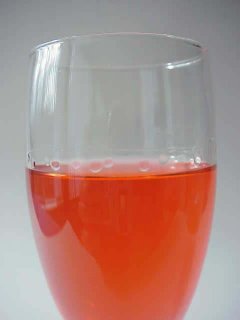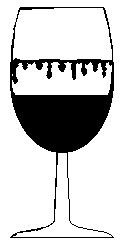So what are legs ?
 So what are the legs of a wine? This was another term I heard several times at the Vintage Virginia Festival, and jotted it down to later address here.
So what are the legs of a wine? This was another term I heard several times at the Vintage Virginia Festival, and jotted it down to later address here.
In my opinion the legs of a wine are just as subjective as taste. Some people taste peach, others apricot, and in the same wine another might not pick up any of these flavors.
So first we begin with the swirl to get the nose of the wine. This exposes the wine to oxygen and releases the aromas within the wine for you and I to smell. This is the part where if you have not perfected the art of swirling, you may end up with red wine on your shirt, or even worse, your friend’s shirt.
Legs are a matter of physical science, and in my humble opinion the details involved supercedes what one can surmise about the quality of a wine based upon the legs. At any rate, the composition of wine is 86% water, 11.2% alcohol, 2.8% other compounds that influence flavor. These compounds are multitudinous, and are what gives the winemaker the ability to create something unique for you and I to enjoy.
The alcohol and water are key to the legs streaking down the sides of your glass. It is based on the fact that alcohol evaporates quicker than water. The alcohol goes up the side of the glass as it evaporates. Shortly after, the watery wine lessened in the alcohol starts to (form a rim) bead. Afterwards, it is only a matter of time until you start to see the tears, or legs run down the sides of your glass. So what can these tears or legs tell us? Many new to wine, as myself, fall into the myth that this is the telltale sign to the quality of a wine. I don't think one could uncover the quality of wine by peering at the legs, but the legs do hold some information for those interested. Legs can tell us something about the alcohol content of a wine, the more legs, the more alcohol. It is also said that the thicker the legs, the fuller the body, and vice versa.
So what can these tears or legs tell us? Many new to wine, as myself, fall into the myth that this is the telltale sign to the quality of a wine. I don't think one could uncover the quality of wine by peering at the legs, but the legs do hold some information for those interested. Legs can tell us something about the alcohol content of a wine, the more legs, the more alcohol. It is also said that the thicker the legs, the fuller the body, and vice versa.
More importantly if you study legs, it helps determine the cleanliness of your wine glass.
Happy Sipping